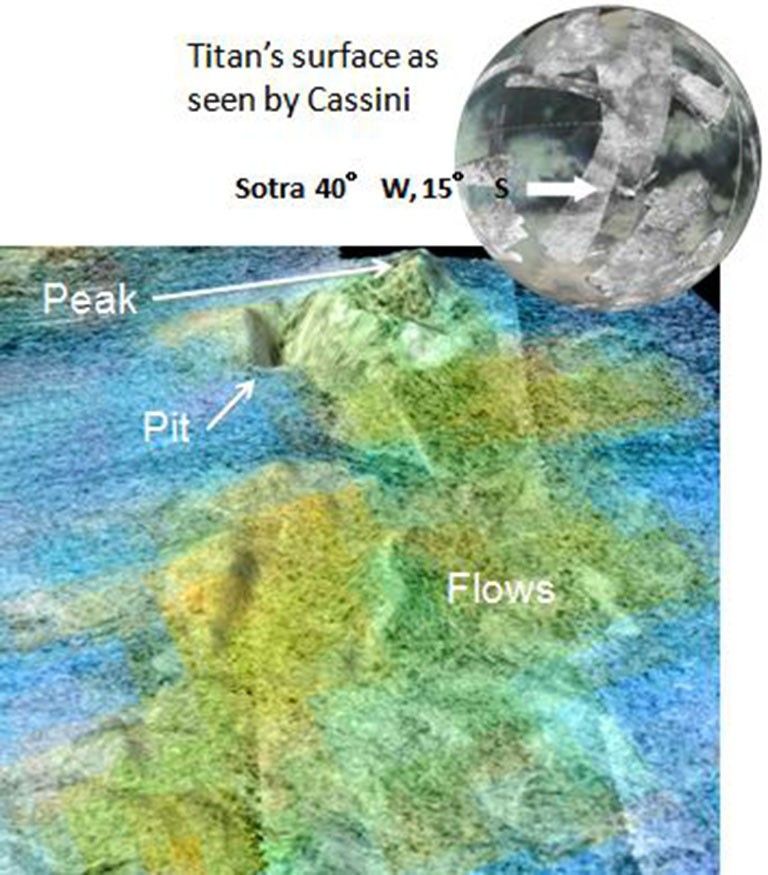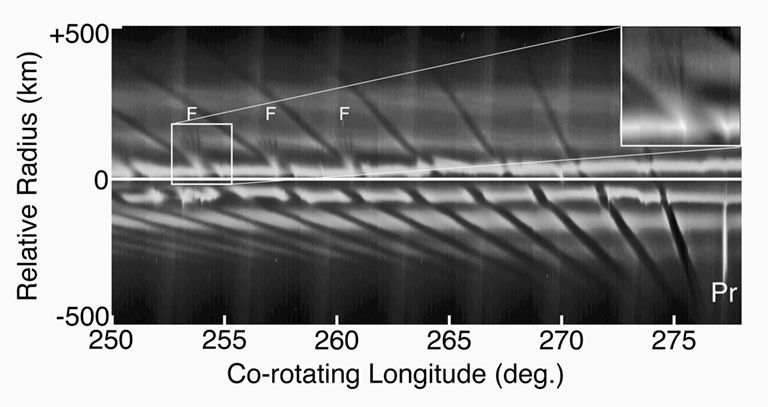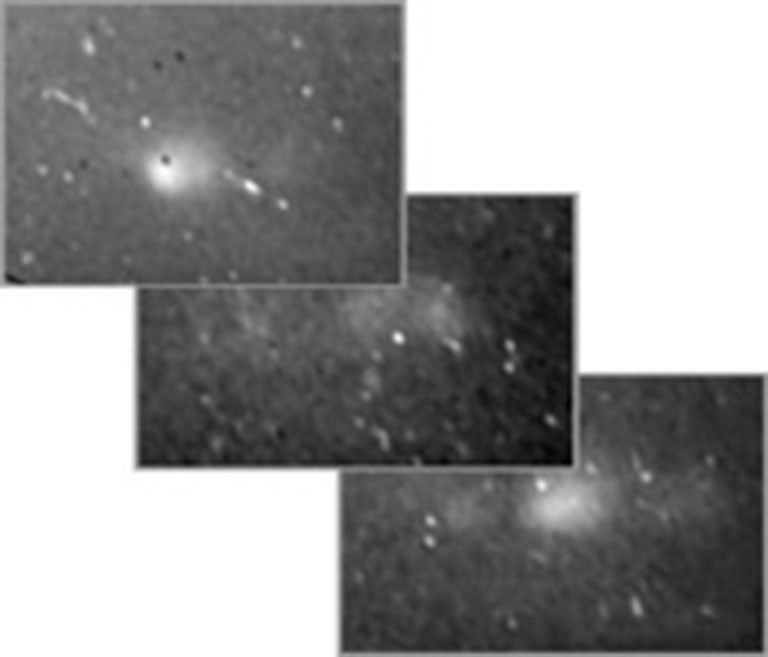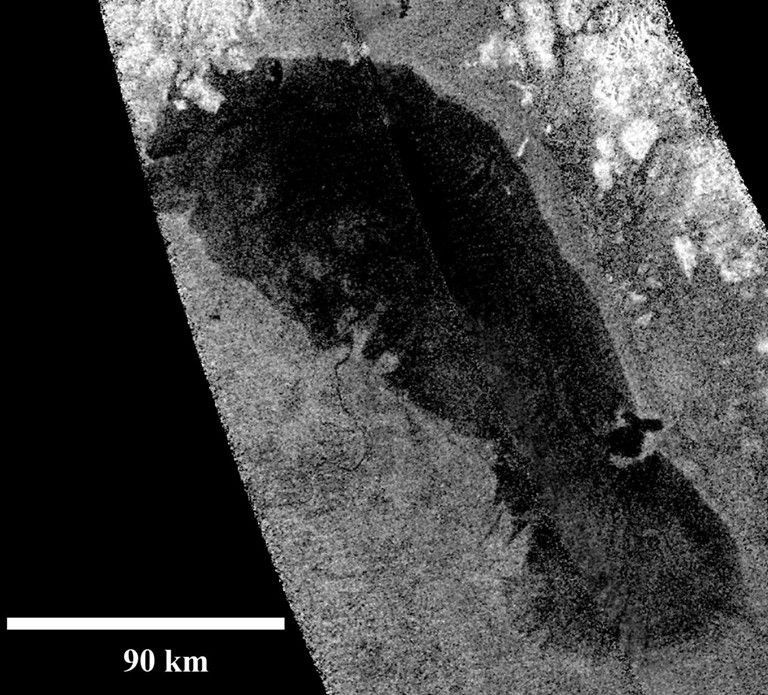The Saturnian system has been studied for hundreds of years, yet its scientific mine still unveils treasures.
The Saturnian system has been studied for hundreds of years, yet its scientific mine still unveils treasures. And even after over five years of close study by the Cassini spacecraft, new scientific discoveries continue to captivate us. At the beginning of 2011 we can now look back in wonder at the 10 most intriguing discoveries of 2010 as determined by Cassini scientists.
1. Mimas “Pac-Man” Thermal Anomaly
- The most detailed temperature map ever made of Saturn’s 396 km (246 mile) diameter inner moon Mimas was obtained by Cassini’s Composite Infrared Spectrometer (CIRS) during its February 2010 flyby.
- The temperature distribution is completely unexpected. Mimas has a warm side, and a cold side that’s up to 15 Kelvin (34 degrees Fahrenheit) colder, with a sharp, V-shaped boundary between them.
- Maybe the giant crater Herschel is somehow responsible for the cold temperatures that surround it?
- But the cold side is also the side that faces forward in Mimas’ orbit around Saturn: Is there a connection?
- There are strong arguments against either explanation! Cassini scientists will be puzzling over this for a while, and they are planning new Mimas observations to help resolve the mystery.
2. What is Consuming Hydrogen and Acetylene on Titan?
- Two new papers based on data from the Cassini spacecraft scrutinize the complex chemical activity on the surface of Saturn's moon Titan.
- One key finding shows hydrogen molecules flowing down through Titan's atmosphere and disappearing at the surface.
- Another result maps hydrocarbons on the Titan surface and finds a lack of acetylene.
- While non-biological chemistry offers one possible explanation, some scientists believe these chemical signatures bolster the argument for a primitive, exotic form of life or precursor to life on Titan's surface.
- One interpretation of the acetylene data is that the hydrocarbon is being consumed as food. The lack of acetylene could be the best energy source for a methane-based life on Titan.
- To date, methane-based life forms are only hypothetical. Scientists have not yet detected this form of life anywhere, though there are liquid-water-based microbes on Earth that thrive on methane or produce it as a waste product. On Titan, a methane-based organism would have to use a substance that is liquid as its medium for living processes, but not water itself. Water is frozen solid on Titan's surface and much too cold to support life as we know it. While liquid water is widely regarded as necessary for life, there has been extensive speculation published in the scientific literature that this is not a strict requirement. The new hydrogen findings are consistent with conditions that could produce an exotic, methane-based life form, but do not definitively prove its existence.
3. Cassini RADAR Discovers “Best Candidate Yet” for Ice Volcano on Saturn’s Moon Titan
- New 3D views reveal multiple mountain peaks, deep pits and finger-like flows at Sotra Facula
- Based on topographic mapping by Cassini team members at USGS, Flagstaff
- Resembles volcanic cones, craters and flows on Earth but made of Titan materials (ice and/or carbon compounds) not molten rock
- Existence of such ice volcanoes on Titan has been controversial
- Other candidate volcanoes on Titan consist only of flows, which might be river-deposited sediments according to some scientists
- Volcanoes could solve mystery of methane gas in Titan’s atmosphere
- The Sun destroys methane over time
- Eruptions could supply methane from interior
4. Giant SnowBalls in Saturn’s F Ring From Prometheus Perturbations
- Massive (1 to10 kilometer, or about 1 to 6 mile) objects are locally formed by Prometheus in the F ring, as it compresses local ring material. These mass concentrations have a lifetime of at least months, survive successive Prometheus passages, and in turn cause their own local ring structure. The effect is especially strong now because of the close passage of Prometheus to the F ring, which happens every 19 years (Beurle et al 2010). A similar effect has been proposed as a trigger for planet formation in the protoplanetary nebula.
5. Visible Lightning on Saturn
- NASA's Voyager mission and Cassini had previously captured radio emissions from storms on Saturn. Cassini scientists even nicknamed a band around the planet around 35 degrees south latitude "storm alley." The visible-light cameras aboard Cassini have been able to take pictures of bright, convective clouds over giant, powerful thunderstorms, including the famous "Dragon Storm" of 2004. (See First Lightning Flashes on Saturn, Saturn's Long-lived Storm, Hissing Storm and Storm at Night (Reprojected View).) But they were previously unable to get pictures of lightning flashing because the planet is very bright and reflective. Sunlight reflecting off the rings made the night side of Saturn as bright as a full-moon night on Earth. Equinox, the period around August 2009 when the sun shone directly over Saturn's equator and lit the rings edge-on only, finally brought the necessary darkness.
6. Plasma Explosions
- “Explosions" of hot plasma (orange and white) on the night side of Saturn’s magnetic field periodically inflate Saturn's magnetic field (white lines). Cassini scientists have been able to compute the pressure that the hot plasma exerts on the surrounding magnetic field by using remote images of the previously invisible hot plasma taken by the ion and neutral camera, part of the magnetospheric imaging instrument on board Cassini.
- These enormous clouds of hot plasma recur in the part of the magnetosphere known as the magnetotail roughly every 10 to 11 hours. They rotate around Saturn at a distance of about eight to 15 times the radius of Saturn.
- Scientists have finally been able to demonstrate that the pressure contained in these clouds is sufficient to inflate the magnetic field in a manner that is consistent with the periodic magnetic field signals that have puzzled them for so long.
7. Strange Color Patterns on Icy Satellites
- Scientists using data from NASA’s Cassini spacecraft have learned that distinctive, colorful bands and splotches embellish the surfaces of Saturn’s inner, mid-size moons. The reddish and bluish hues on the icy surfaces of Mimas, Enceladus, Tethys, Dione and Rhea appear to be the aftermath of bombardments large and small. In a 2010 paper, scientists describe prominent global patterns that trace the trade routes for material exchange between the moons themselves, Saturn’s E ring and the planet’s magnetic environment. The finding may explain the mysterious Pac-Man thermal pattern on Mimas.
8. Saturn Propellers Reflect Solar System Origins
- “Giant” A ring propellers are migrating or (perhaps more likely) oscillating back and forth due to their interactions with surrounding ring material; these are outside the Encke gap and represent a different population from the three propeller belts found closer to Saturn than the Encke gap (Tiscareno et al 2010). The possibility of observing migration of embedded objects is of great interest from the perspective of planet formation in gaseous protoplanetary disks.
9. Beaches, Deltas, Flooded Canyons Around Titan’s Lake Ontario Lacus
- Several 2010 papers by scientists working with the Cassini spacecraft describe evidence of beaches, bays, and deltas at Ontario Lacus, the largest lake in the southern hemisphere of Saturn’s moon Titan. They also describe seasonal changes in the lake’s size and depth.
10. Seasonal Change on Saturn: A Cosmic Dimmer Switch
- From 2005 to 2009, Saturn emitted gradually less energy each year.
- Over this period, the Southern Hemisphere consistently emitted more energy (~1/6th more energy) than the north over this period.
- During the Voyager epoch, emission was more uniform over the globe.
- Emitted energy rises and falls are correlated to changes in Saturn’s effective temperature.
- Compared to Voyager epoch, the energy levels changed with season and differed from the last time we had visited with spacecraft.
- One possible explanation for the observed effects are due to differences in cloud cover which can vary from season to season.










































